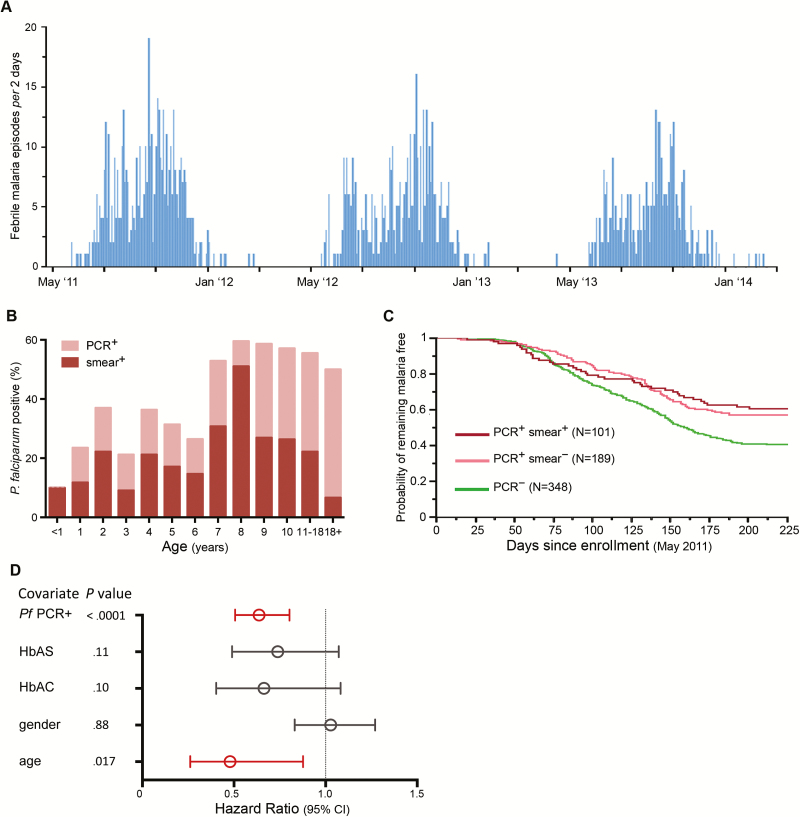Figure 1.
Asymptomatic Plasmodium falciparum infection at the end of the dry season independently predicts decreased febrile malaria risk during the ensuing malaria season. A, Frequency of clinical malaria episodes every 2 days over 3 years in a cohort of 695 subjects aged 3 months–25 years. Clinical malaria defined as axillary temperature ≥37.5°C, ≥2500 asexual parasites/μL of blood, and no other cause of fever discernible on physical examination. B, Age-stratified point prevalence of asymptomatic P. falciparum infection detected by polymerase chain reaction (PCR) or blood smear at the end of the dry season in May 2011. C, Kaplan-Meier analysis of time to first febrile malaria episode during the 2011 malaria season stratified by P. falciparum infection status in May 2011. Pairwise comparisons by log-rank test: PCR+smear+ vs PCR–smear–(P < .0001); PCR+smear– vs PCR–smear– (P < .0001); PCR+smear+ vs PCR+smear– (P = .51). D, Cox model showing the effect of P. falciparum infection status in May 2011 on the risk of febrile malaria during the ensuing 2011 malaria season, adjusted for covariates. Hazard ratios and 95% confidence intervals are represented by open circles and horizontal bars, respectively. Abbreviations: CI, confidence interval; HbAC, hemoglobin type AC; HbAS, hemoglobin type AS; PCR, polymerase chain reaction; Pf, Plasmodium falciparum.

